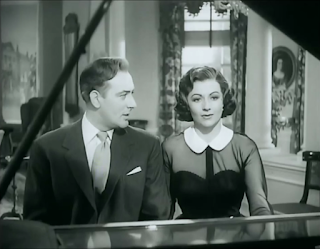Author departs from tradition by letting her detective fall in love
Dorothy L
Sayers allows her noble sleuth to have a love interest in Strong Poison, the
fifth novel she wrote featuring the exploits of amateur detective Lord Peter
Wimsey.
Strong Poison is the fifth of
Dorothy L Sayers's Wimsey novels
The author
introduces the character of Harriet Vane, a crime novelist, who, like Wimsey,
is Oxford educated and has had an unhappy time romantically.
When Wimsey
sees Harriet Vane for the first time, she is in the dock, accused of the murder
of her ex-lover, the poet Philip Boyes.
Strong
Poison, which was published in 1930, is considered to be a major departure for a
Golden Age mystery as it shows the detective falling in love with a woman
accused of the murder that is central to the plot.
Dorothy L
Sayers fans have speculated that the writer modelled Harriet Vane on herself. The
writer had suffered a romantic disappointment and by creating the long-drawn-out
romance between Harriet Vane and Wimsey, which was to run through four novels,
it allowed her to have a vicarious affair with the detective herself, far-fetched
though this might seem now.
Dorothy had been very impressed with the novel Trent’s Last Case by E C Bentley, published in 1913. In the story, the detective, Philip Trent, falls in love with the wife of the murder victim.
Right until the end of the novel the reader does not know
for certain that the wife is not the murderer. E C Bentley’s novel was intended
as a send up of the classic crime story and it also involves the hero detective
identifying the wrong person as the murderer close to the end of the story,
completely at odds with the conventions of the genre. But Dorothy, along with
many other readers, really liked the novel and went on record as saying that
Bentley’s novel ‘holds a very special place in the history of detective fiction.’
In Strong
Poison, the victim, Harriet’s ex-lover Philip Boyes, has died from arsenic poisoning.
He has attempted to engineer a reconciliation with Harriet on the night of his
death and she has given him a cup of coffee while listening to what he had to
say. She is accused of the murder because she is found to have bought poison
under an assumed name. She has claimed this was to test one of the plot points
in the crime novel she is currently writing.
Fortunately,
the trial results in a hung jury and the judge has to order a retrial. With no
time to lose, Wimsey visits Harriet in prison to tell her he is convinced of
her innocence and is determined to catch the real murderer. He also asks her to
marry him, but she turns him down politely. .jpg)
Sayers herself had suffered
a romantic disappointment
The jury has
failed to return a unanimous verdict because one person sitting on it could not
bring herself to believe in Harriet’s guilt. This is Miss Katharine Climpson, a
spinster who, coincidentally, sometimes works for Wimsey by carrying out
inquiries and undercover work because she has to live in difficult financial circumstances
and needs to earn some money.
Wimsey deploys
her to gather evidence for his inquiry and, in one hilarious scene, she is
obliged to pose as a medium and hold a séance to obtain the information he
needs. Miss Climpson first appeared doing undercover work for Wimsey in the
novel, Unnatural Death, two years before Agatha Christie’s Miss Marple, also a
spinster with a talent for detection, was introduced on the crime fiction
scene.
As well as being an intriguing mystery, Strong Poison explores some of the issues of the time, such as sex before marriage and the double standards that were applied to the behaviour of men and women. The novel is intricately plotted and written in a very entertaining style and I would highly recommend that you read it.
Strong Poison is available from
or







